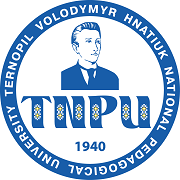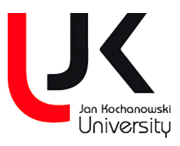LEXICAL MEANS OF EXPRESSING TIME IN NOVELS AUDREY NIFFENEGGER
DOI:
https://doi.org/10.32782/2307-1222.2025-59-6Keywords:
lexical means, temporality, literary narrative, symbolism, chronology, time markersAbstract
The article analyzes lexical means of expressing time in Audrey Niffenegger’s novels “The Time Traveler’s Wife” and “Her Fearful Symmetry”. Time in these novels is not just a chronological background but a key concept that determines the structure of the plot, characters’ characters, and the reader’s perception of events. The novel “The Time Traveler’s Wife” analyzes the non-linearity of time, which is reflected through specific lexical units. Time markers – words and phrases that indicate a specific time or period (for example, dates, days of the week, age), as well as vocabulary that conveys the subjective perception of time by different characters are studied. Particular attention is paid to lexical means that create the effect of a broken chronology and reflect the protagonist’s chaotic movements in time.In the novel “Her Fearful Symmetry”, time is a multidimensional category combining past, present, and future. In this novel, symbolic lexical means play an important role, emphasizing the connection between temporal dimensions and spatial aspects. The use of lexical repetitions that create a sense of cyclicity, time metaphors that allow us to comprehend time through images and comparisons, and epithets that add emotional color to temporal descriptions are analyzed. The article also examines the role of vocabulary that conveys the atmosphere of mystery and mysticism characteristic of this novel.The article examines the functional load of lexical means in the context of philosophical ideas about time embedded in the texts. The texts of the works are analyzed to see how the lexicon contributes to creating a certain emotional mood associated with the passage of time, memory, loss, hope, and other experiences. Particular attention is paid to the interaction of lexical devices with the general style of the novels, which allows us to better understand the role of time as a narrative tool that shapes the plot and the emotional impact on the reader. The study covers the analysis of nouns, adverbs, adjectives, verbs and other parts of speech that express time, which allows for a comprehensive study of the problem of expressing time in Audrey Niffenegger’s novels.
References
Niffenegger A. The Time Traveler’s Wife. San Francisco : MacAdam/Cage, 2003. 253 p.
Гошилик Н.С. Схемні образи часу в сучасній англійській мові : монографія. Івано-Франківськ : НАІР, 2013. 220 с.
Лаговська В.О., Олейнікова Г.О. Історія дослідження хронотопу. Науковий вісник ХДУ. Серія : Германістика та міжкультурна комунікація. 2023. № 1. С. 29–34. DOI: https://doi.org/10.32999/ksu2663-3426/2023-1-4.
Борисова Н. Мовно-стилістичні засоби вербалізації образу головної героїні в романі Джоджо Мойєс «Paris for one». Молодий вчений. 2020. № 4 (80). С. 633–637. DOI: https://doi.org/10.32839/2304-5809/2020-4-80-131.
Бакуменко О.О., Бондар А.Ю. Засоби вираження категорії часу в англійській мові. URL: http://baltijapublishing.lv/omp/index.php/bp/catalog/view/134/4227/8893-1 (дата звернення: 13.12.2024). DOI: https://doi.org/10.30525/978-9934-26-l 10-7-27
Савчук А. Мовні засоби вираження часу та простору у романі Одрі Ніффенеггер «The time traveler’s wife». Міжкультурна комунікація і перекладознавство: точки дотику та перспективи розвитку. Переяслав, 2021. С. 215–219.
Бабенко А. Художній час у літературному творі. Наукові розвідки студентів факультету іноземної філології Харківського національного педагогічного університету імені Г.С. Сковороди. 2020. Вип. 1. С. 11–12.
Ігіна О.В., Рута А.Є. Лексико-граматичні особливості реалізації категорії часу в постмодерністському художньому романі Одрі Ніффенеґґер «Дружина мандрівника у часі». Modern problems of science, education and society : Proceedings of the 6th International scientific and practical conference. SPC «Sci-conf.com.ua». Kyiv, 2023. P. 399–405.
Crystal D. Words in Time and Place: Exploring Language Through the Historical Thesaurus of the Oxford English Dictionary. Oxford : Oxford University Press, 2013. 304 p.
Ускова Т.О., Баласанян О.Д., Карабітськова Н.О. Лексико-граматичні засоби вираження темпоральності та їх відтворення при перекладі. Вісник науки та освіти. Серія «Філологія». 2024. Вип. № 9(27). С. 440–453. DOI: https://doi.org/10.52058/2786-6165-2024-9(27)-440-452.
Klein W. Time in Language, Language in Time URL: http://www.iapsych.com/articles/ klein2008.pdf (дата звернення: 11.12.2024).
Ладовиря В. Ю. Лексичні засоби вираження художнього простору та часу в дилогії «Room at the Top» та «Life at the Top» Джона Брейна. Одеса, 2023. 88 с.
Niffenegger A. Her Fearful Sуmmetry. Random House, 2010. 496 p.
Munger D. Language and Time: More on whether the Future is Literally in Front of Us. URL: http://scienceblogs.com/cognitivedaily/ 2006/06/language_ and_time_more_on_whetp (дата звернення: 11.12.2024).
Evans V. The Meaning of Time: Polysemy, the Lexicon and Conceptual Structure. URL: http://www.vyvevans.net/meaningoftime.pdf (дата звернення: 11.12.2024).
Segal E. Time Travel Stories as a Challenge to Narratology: The Case of The Time Traveler’s Wife. Tel Aviv : Porter Institute for Poetics and Semiotics, 2016. 32 p.
Олейнікова Г. Композиційно-мовленнєві форми як одиниці членування художнього тексту. Науковий вісник Ізмаїльського державного гуманітарного університету. 2021. № 47. C. 57–62.










